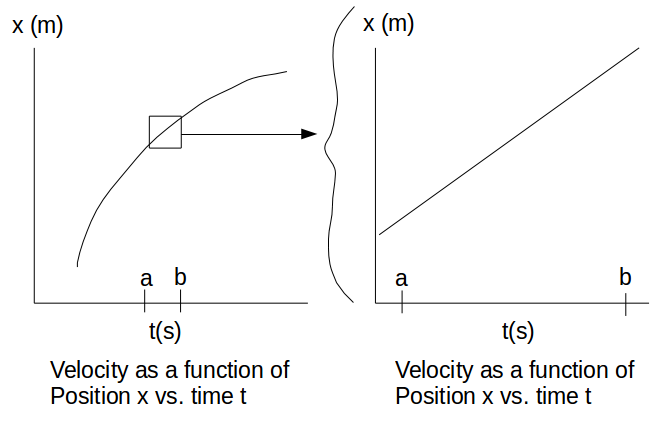What does v=dx/dt means?
2 Answers
It represents the instantaneous variation of POSITION with TIME. also known, as velocity.
Explanation:
The explanation can be a little bit boring but...
Cosider a car that moves from position
You can represent the variation of position using a number (a kind of position parameter) called average velocity as:
The problem is: "what happened in the middle? Did the car stop...go faster...slower...?"
To "look" inside your interval you can reduce the time interval and try to focus on a specific instant.
This means reducing
So, basically, you'll be able to evaluate the velocity at a point (not interval) and have an instantaneous velocity!
It is easy to say but mathematically...you need:
For example:
consider a car that has a position modelled by the function:
So
instantaneous velocity will be given as:
So at each instant you will get the velocity at exactly that instant: for example at
Hope it is not too confusing!
This means that the velocity over a certain period of time is the instantaneous change in position
Imagine looking at a graph of position (x) vs. time (t) and determining the slope of that graph.
...when the change,

The little square represents what you see on your calculator.
When that is the case, you can take two points very, very close to each other, like
You can also shift this small square window around and find velocities at other points on the same curve in a similar fashion, and they would be instantaneous velocities, at instantaneous moments in time.



